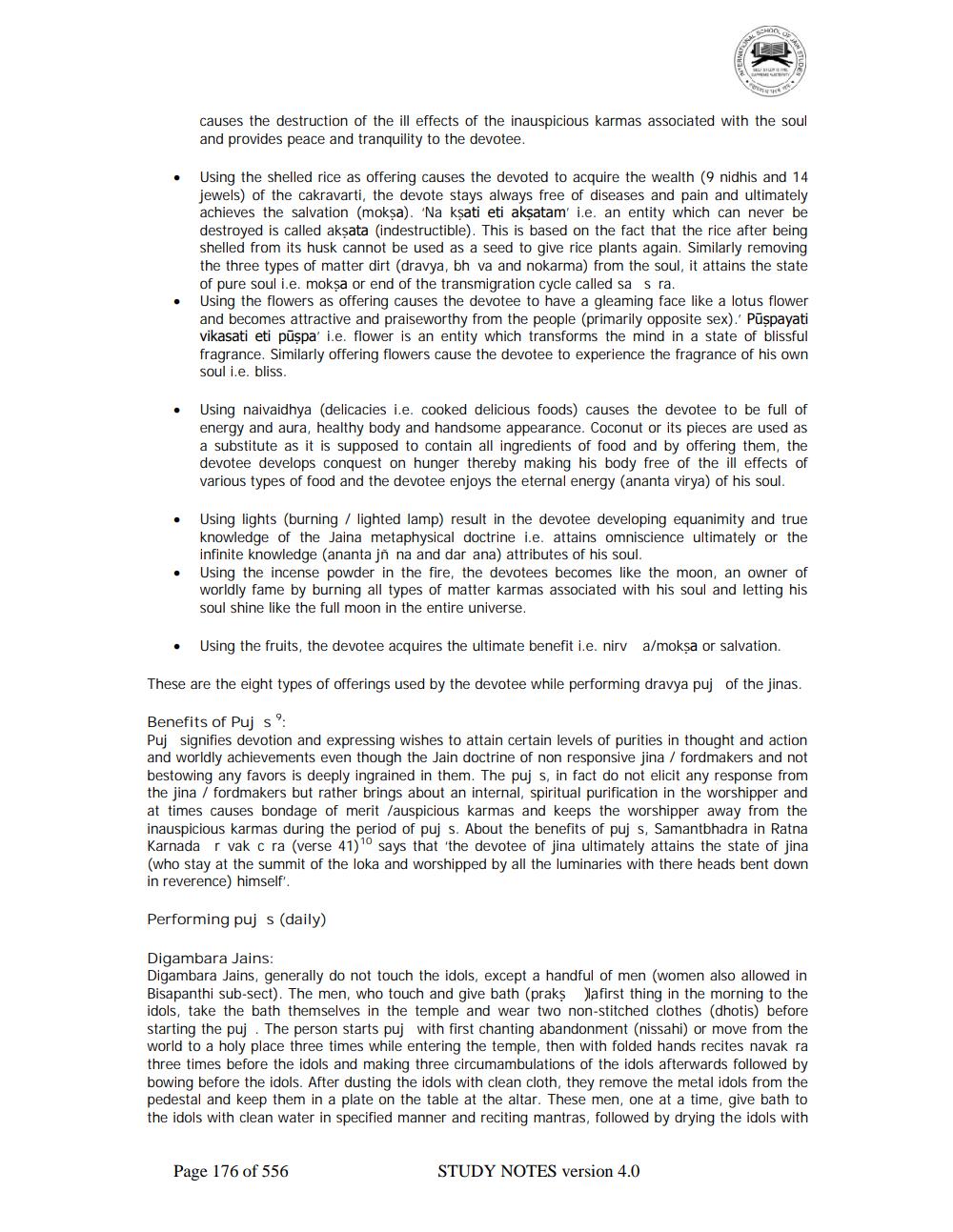________________
causes the destruction of the ill effects of the inauspicious karmas associated with the soul and provides peace and tranquility to the devotee.
Using the shelled rice as offering causes the devoted to acquire the wealth (9 nidhis and 14 jewels) of the cakravarti, the devote stays always free of diseases and pain and ultimately achieves the salvation (mokşa). 'Na ksati eti akşatam' i.e. an entity which can never be destroyed is called akşata (indestructible). This is based on the fact that the rice after being shelled from its husk cannot be used as a seed to give rice plants again. Similarly removing the three types of matter dirt (dravya, bh va and nokarma) from the soul, it attains the state of pure soul i.e. moksa or end of the transmigration cycle called sa s ra. Using the flowers as offering causes the devotee to have a gleaming face like a lotus flower and becomes attractive and praiseworthy from the people (primarily opposite sex). Pūşpayati vikasati eti püspa' i.e. flower is an entity which transforms the mind in a state of blissful fragrance. Similarly offering flowers cause the devotee to experience the fragrance of his own soul i.e. bliss.
Using naivaidhya (delicacies i.e. cooked delicious foods) causes the devotee to be full of energy and aura, healthy body and handsome appearance. Coconut or its pieces are used as a substitute as it is supposed to contain all ingredients of food and by offering them, the devotee develops conquest on hunger thereby making his body free of the ill effects of various types of food and the devotee enjoys the eternal energy (ananta virya) of his soul.
Using lights (burning / lighted lamp) result in the devotee developing equanimity and true knowledge of the Jaina metaphysical doctrine i.e. attains omniscience ultimately or the infinite knowledge (ananta jň na and dar ana) attributes of his soul. Using the incense powder in the fire, the devotees becomes like the moon, an owner of worldly fame by burning all types of matter karmas associated with his soul and letting his soul shine like the full moon in the entire universe.
Using the fruits, the devotee acquires the ultimate benefit i.e. nirv
a/mokṣa or salvation.
These are the eight types of offerings used by the devotee while performing dravya puj of the jinas.
Benefits of Puj s: Puj signifies devotion and expressing wishes to attain certain levels of purities in thought and action and worldly achievements even though the Jain doctrine of non responsive jina / fordmakers and not bestowing any favors is deeply ingrained in them. The puj s, in fact do not elicit any response from the jina / fordmakers but rather brings about an internal, spiritual purification in the worshipper and at times causes bondage of merit lauspicious karmas and keeps the worshipper away from the inauspicious karmas during the period of puj s. About the benefits of puj s, Samantbhadra in Ratna Karnada vak c ra (verse 41)' says that the devotee of jina ultimately attains the state of jina (who stay at the summit of the loka and worshipped by all the luminaries with there heads bent down in reverence) himself'.
Performing puj s (daily)
Digambara Jains: Digambara Jains, generally do not touch the idols, except a handful of men (women also allowed in Bisapanthi sub-sect). The men, who touch and give bath (praks afirst thing in the morning to the idols, take the bath themselves in the temple and wear two non-stitched clothes (dhotis) before starting the puj. The person starts puj with first chanting abandonment (nissahi) or move from the world to a holy place three times while entering the temple, then with folded hands recites navak ra three times before the idols and making three circumambulations of the idols afterwards followed by bowing before the idols. After dusting the idols with clean cloth, they remove the metal idols from the pedestal and keep them in a plate on the table at the altar. These men, one at a time, give bath to the idols with clean water in specified manner and reciting mantras, followed by drying the idols with
Page 176 of 556
STUDY NOTES version 4.0




